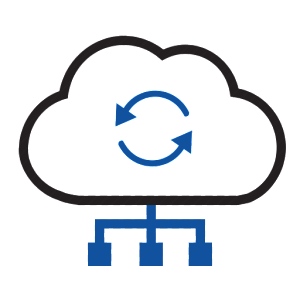
Customers are the king for any businesses. In this heavily competitive world, attracting and retaining customers are the biggest challenge for any organization or company. It does not matter whether your company offers better product or service; your company can lose your customers due to poor customer relationship management (CRM). CRM is a different game altogether. In order to make your customer relationship management easier, your business or organization should make use of efficient software product.
SalesForce has almost become synonymous for customer relationship platform. Today, almost all big businesses utilize SalesForce for their customer relationship management. SalesForce is a highly robust platform that it should be developed according to the specification of a particular organization. Every software product will undergo a development lifecycle before it released to the end users. SalesForce development lifecycle is not simple and neither a linear process. The difference between the normal standalone software and SalesForce is that the latter is developed, tested and implemented in the cloud. In general, there are lots of actors are involved during the development of SalesForce lifecycle. These actors are proficient in specific skills and each of them a different role during the lifecycle development.
Some of the typical actors involved during the development lifecycle are the release manager, product manager, software developer, quality engineer, trainer and administrator. The environment or base, where Salesforce is being developed is called as Force.com IDE. The very first step of the development lifecycle is setting up of source control. This role is played by the release manager.
The second step of the development lifecycle is the commencement of the coding process. The coding process is usually done by the developers, who are proficient in various coding or programming languages. The developers do coding work after getting the requirements from the clients and managers. The third step of the development lifecycle is testing. The purpose of testing is to find whether the product works according to the end user requirements. Usually, testing is done by QA experts. If the experts find any faults or defect, then the app will be sent back to the development stage to make further changes in coding.
The fourth step of the development lifecycle is user acceptance testing. This is very different from testing done by QA experts. Here, the client or end user would use the developed product to find out the errors. Upon the completion of the fourth step – user acceptance testing, the developed software product is released for production. However, the life cycle does not end with this. Even after the software is released for production, there may be changes that need to be implemented on the software in future.
What makes SalesForce platform different from other cloud applications is Force.com, where the Salesforce platform is actually built. Force.com is the base of all SalesForce products such as Community Cloud, Service Cloud, Sales Cloud and App exchange. The Force.com has many advantages such as security, scalability, reliable and fast. Most striking aspect is that it can provide support 100,000 organizations and higher, and can support two billion transactions in a single day.
 Force.com is able to achieve such robustness due to its exclusive software architecture. The framework of Force.com can be easily used or shared by many users, however, with no compromise in security. While security is the biggest concern for most cloud-based application, SalesForce eliminates this issue with its stringent security measures. Usually, the organizations spend time in upgrading their CRM software from time to time to meet the latest industry demands. With SalesForce platform, business owners and managers need not worry about software upgrade and put their full focus on business.
Force.com is able to achieve such robustness due to its exclusive software architecture. The framework of Force.com can be easily used or shared by many users, however, with no compromise in security. While security is the biggest concern for most cloud-based application, SalesForce eliminates this issue with its stringent security measures. Usually, the organizations spend time in upgrading their CRM software from time to time to meet the latest industry demands. With SalesForce platform, business owners and managers need not worry about software upgrade and put their full focus on business.
No matter how good your SalesForce software is, your organization can reap its benefit only if your employees and managers know how to utilize them. Lack of knowledge can result in errors, which can trivial to severe. Learning how to use the SalesForce platform by one’s own experience takes a lot of time. In this highly fast-paced business environment, it is necessary for the employees to stay knowledge in using the SalesForce platform any given time. This is the reason, why SalesForce training becomes necessary for every organization and job-aspiring individuals.
If you are residing in Chennai, then you are quite lucky as you have plenty of training centres to offer SalesForce training. However, the best results could be achieved by utilizing the service of the best Salesforce training Chennai. You may use the local search engines and directories to find out the best centres for SalesForce training in Chennai. You can ask your peers, who have undergone SalesForce training very recently in Chennai. Their reviews and testimonial could really help you in choosing a good SalesForce training centre in Chennai.
Have a look at the prospective training centre before you enrol your name there. The website should provide the list of courses and certification offered by the training centre.
